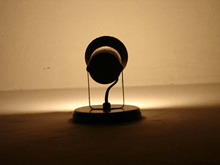 ACCEPTABILITY is defined by Davis (1989) as the act of freely admitting the use of a fixed technology. Acceptability does not depend on technology or technological products, but on the human being who will assess whether to accept and therefore use such technology. There are several theoretical approaches to acceptability. According to the Technology Acceptance Model (TAM) by Fred Davis (1989), the acceptability of a system basically depends on two variables:
The PEOU is closely related to the usability of the tool. If the design has taken into account their potential users, the tools will be adapted to their capacity, mental model and prior knowledge, and will not mean any additional effort nor be difficult to manage. But technology should not only be easy to use to be accepted, it must also be useful. PU refers to the probability that an individual using a particular technology has, to improve its performance in a specific field. At Labpsitec we take into account, from the very beginning of a new technological system, the intended audience, their needs and basic skills. This allows them to adapt the best possible way to each end user, their expectations and enhance a better user experience. Some examples of our work: Butler Project: A web based technology and Virtual Reality system for the elderly. The optimization of all functions allows them, who have never used computers, to be able to use different tools (e-mail, video, blog, Virtual Reality, etc.) independently, from the very first day. VISION Project: As usability consultants, our work has focused on optimizing user interaction in the use of gestural language and graphical user interface, in an autostereoscopy system for videoconferences. | ||||
|
||||

 These two basic factors let us explain why at Labpsitec we are convinced of the need of taking into account –when developing new technology-, certain features that make improving their acceptability.
These two basic factors let us explain why at Labpsitec we are convinced of the need of taking into account –when developing new technology-, certain features that make improving their acceptability.